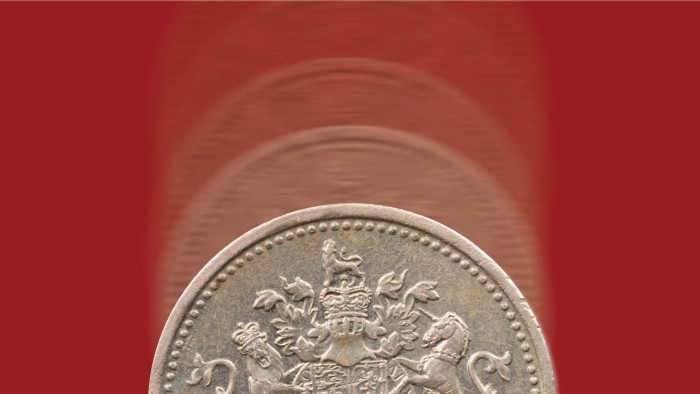Why did the pound fall so fast?

Simply sign up to the Currencies myFT Digest -- delivered directly to your inbox.
The British pound plunged from $1.26 against the dollar to a little over $1.18 in two minutes — an extraordinary move in normal market conditions. What is equally extraordinary, however, is the difficulty in explaining how and why it happened.
What time did it happen?
Depending where you are, it was just after 7pm in New York, 7am in Hong Kong and Singapore, 8am in Tokyo, or 10am in Sydney. Time zones matter because they have a bearing on the liquidity in the forex markets, particularly in Asia which has no single trading centre. But what really matters are the precise minutes in which the trading took place.
And the exact minutes are?
In the Hong Kong/Singapore timezone, 7.07am to 7.09am. In the 60 seconds from 7.07am, the pound moved from $1.26 through $1.25 to a low of $1.203. Between $1.26 and $1.25, traders say the move was orderly. But when it tumbled through $1.24 “that was when all hell broke loose”, according to one banker.
The low was $1.1819 at 7.09am, based on Reuters data. It took a further 30 minutes for the pound to regain $1.24 — during which time activity was fairly steady as traders regained composure after that unnerving tumble.
What are the possible explanations for why it happened?
1) It was fat-fingered traders or computers
Immediate finger-pointing centred on the likelihood of a “fat-finger” trade, where someone typed the wrong number in an order. These are not uncommon. Another theory is that it was a glitch in an algorithm used to automate trades — along the lines of the 2010 US stock market “flash crash” or the 2014 spike in US Treasuries.
If it was a fat finger, then the market convention is that the counterparties will agree to wipe it out and it will be scrubbed from the records within hours. The fact that has not happened yet makes a fat finger less likely, but watch this space.
2) It was timed to take advantage of low liquidity
There is no proof it was deliberate, but if someone wanted to try moving the market sharply, then just after New Yorkers have hit the bars and while Hong Kongers and Singaporeans are sipping their first coffees would be the perfect time. Sydney and Tokyo were up and running, but Singapore is the region’s biggest foreign exchange centre.
3) It was connected to options expiries
Friday is the day forex options tend to expire and this can cause extreme trading moves if the writers of those options — banks — suddenly need to hedge themselves against a big drop in a currency. Based on data from DTCC, the clearing and settlement provider, the biggest group of expiring sterling-dollar options was at the $1.25 level, with a notional $1.23bn outstanding. In other words, the sudden slide in the pound below $1.25 triggered a scramble by writers of options to sell the pound and protect themselves from losses.
4) It was due to stop-loss orders below $1.26
This is a perennial market explanation to cover almost all sharp moves with no clear cause. Investors leave orders with their banks to reduce or close out their positions at pre-agreed levels — to mitigate the risk of a sharp move when they are, say, asleep. The risk is that a build-up of orders at the same level exacerbates a price move when they are all triggered simultaneously.
5) It was François Hollande
The French president has taken a tough stance over Brexit, according to a report published by the Financial Times at about 7.07am Hong Kong time. Many trading algorithms scrape news websites for breaking stories, so it is possible the article was picked up by one attuned to pound/Brexit risks, which then traded on its view of the information.
However, traders contacted by the Financial Times put the exact start of the pound’s move at 7 minutes and 3 seconds past the hour, and the FT’s Hollande story was not published until 7 minutes and 13 seconds past.
Why don’t we know precisely what happened?
The forex market is not a single market, but a collection of trading systems across different countries and time zones. There is no single central repository of information. Providers of data and trading such as Reuters and Bloomberg quote different lows and different prices at different times. Fat-finger trades tend to go public at some point especially if carried out by a bank, but there is no obligation on an algorithm-based hedge fund, for example, to claim responsibility.
What happens next?
More sterling weakness beckons, say traders. The pound has been under pressure all week since Theresa May addressed the Conservative party conference. Even before the pound’s overnight slide, Goldman Sachs predicted a further 5 per cent decline in sterling’s trade-weighted value over the next three months, which would take the pound down to $1.20. The pound recovered quickly from its shock move lower, but recovered only to about $1.24 against the dollar, not its pre-plunge level of $1.26. That suggests investors may not think $1.18 is the right level just yet, but they believe the pound will keep heading lower for now.
Letter in response to this article:
Perhaps the pound is finding its true value / From John Staddon
Comments